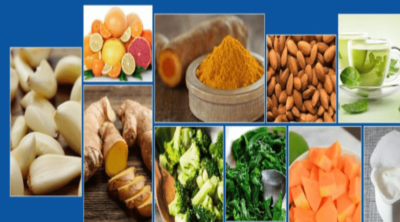
Green pepper has numerous health benefits to offer. This article provides some information on the nutrition and health benefits regarding the same.
Green pepper is a fruit-cum-vegetable that is more popularly known as ‘capsicum’. These bell peppers are fruits which originate from the Capsicum annuum species. If one considers all the types of peppers, then you would observe that these yields come from a very colorful family. They also come in other colors like yellow, red, and orange. Over the recent years, many agricultural research studies have proved that these bell peppers have been a very good source of nutrients. Also, their consumption has rapidly increased from an average of 8 pounds to 10 pounds per person.
While bell pepper has rightfully earned its sweet name in the culinary world with its crunchy and rich taste, one serving of the same works wonders in a human body.
Capsicum Provides
Staple Nutrition
As per the studies of the United States Department of Agriculture (USDA), a medium-sized bell pepper contains 24 calories (cal), 3 grams (g) of sugar, certainly 2 grams (g) of dietary fiber, and beneficially 1 milligram (mg) of protein. That’s certainly a lot of nutrients in one tiny fruit. Proteins, amino acids are considered as the building blocks of body muscles and organs in our body. Although it has been observed that capsicum contains other acids such as serine, threonine, leucine, lysine, etc, they are definitely not in an adequate proportion to condition out as adept bodies of proteins.
Vitamin C
Bell pepper is considered as one of the best sources for vitamin C. A medium-sized capsicum contains 95.7 mg of vitamin C. This figure would also beat the amount of nutrients found in an orange (63.5 mg). But like an orange which we consume as a whole, it’s not possible to eat an entire capsicum at once. Thus, if we consider a minor part of it in a serving, like say ‘one of its diced rings’, that much would measure up 8 mg of vitamin C. This vitamin C helps in curing small injuries in the body, it boosts the immune system, and balances the hormonal levels in women. It also provides a building block for the muscular systems.
Other Vitamins
Capsicums are not only a good source of vitamin C, but also consist of vitamin B6, vitamin K, and vitamin A. If you experiment cutting out 10 strips of this bell pepper, and measure it up, the least you will see is its contents weighing up to 21.7 mg. Due to the presence of so many vitamins, in this edible fruit, bell pepper certainly facilitates blood clotting, and can also fight infections. Other small amounts of vitamins present are folate, thiamine, vitamin E, riboflavin, pantothenic acid, and niacin.
Minerals
It’s true that capsicum is a good source of minerals, but they are present in scarce amounts. However, the two abundant qualifiers are manganese and potassium. A medium-sized serving would provide 9% of DV (daily value), and 7 % of potassium for the same. While manganese that is present in bell pepper helps in balancing the glucose levels in the body, and also strengthening the bones and the muscles, potassium plays a vital role too. It helps in appropriate functioning of the muscles. Iron, calcium, zinc, magnesium, phosphorus, and lastly, copper are the remaining minerals present in trace amounts. They play their part of strengthening teeth, bones, carrying oxygen through the body, proper nerve functions, DNA creation, and the maintenance of pH level in the body.
Other Nutrients
Besides the staple nutrients like proteins and few acids present in green pepper, fatty acids like omega-3 and omega-6 are present as well. In a medium-sized vegetable, the content of omega-3 fatty acids is 64.3 mg, and that of omega-6 fatty acids is 9.5 mg. Besides, the green-colored pepper bells, the ones that are orange and red in color also have adequate amounts of zeaxanthin and lutein antioxidants present in them. About 10.7 mg of phytosterols are present in this fruit. This definitely lowers the bad LDL cholesterol level in the body.
Some Considerations
The portion size is another important aspect. Mostly, studies have shown yields that are free, and low, in cholesterol, when it comes to fat and calories. It has been observed that a medium-sized portion serves 10% of the daily value of dietary fibers. This in a way regularizes bowel movement, and certainly lowers the risk of diabetes or other heart diseases. Since omega-3 and omega-6 fatty acids are present in this vegetable, they help in preventing cardiovascular diseases in the body.
Nutrition Facts
| Green Peppers | |
| Calories 33 | Calories from Fat 3 |
| % Daily Value | |
| Total Fat 0g | 0% |
| Cholesterol 0 mg | 0% |
| Potassium 287 mg | 8% |
| Sodium 5 mg | 0% |
| Total Carbohydrate 7.5 g | 3% |
| Dietary Fiber 2.8 g | 11% |
| Protein 1.5 g | 3% |
| Sugars 4 g | 11% |
| Vitamin A 12% | Vitamin C 220% |
| Calcium 2% | Iron 3% |
Capsicums are available throughout the year, and even throughout the world. They are abundantly cultivated in places like California and Florida. These are mainly used in breakfasts or meals.
Disclaimer: This article is for informative purposes only and does not in any way attempt to replace the advice offered by an expert nutritionist on the subject.
